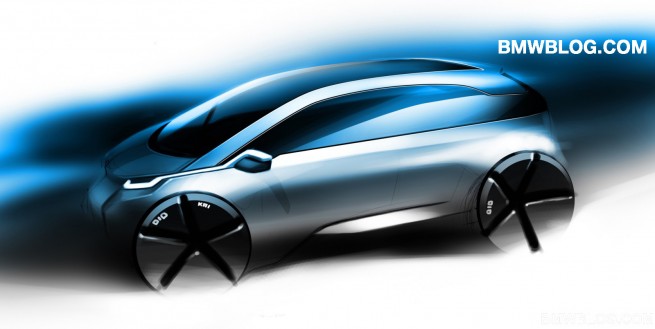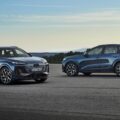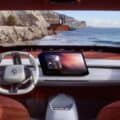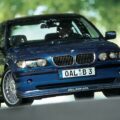You gotta love those tree-huggers. They are seriously convinced that riding a bicycle or eating tofu will save a few icebergs or some tasmanian animals from extinction. As a matter of fact, couple days ago, I got into a fight with one of them because of my love for cars, especially BMW.
Don’t get me wrong, I eat organic food, recycle paper, turn off the lights (which is not for these new, “green is cool” reasons), but simply because I was raised that way and I’m trying to be rational and lead a healthy life.
But the problem is that in the eyes of many, BMWs are still synonymous for high performance sports cars and not for seriously sophisticated and frugal pieces of automotive machinery.
I always like to point out that my E90 320d sedan has MPG figures of comparable with a Toyota Prius while being fast, spacious and of course, quite brilliant to drive. Unlike the Prius, that is.
BMW has firmly refused to adopt this hip “green” image, but in a way, they’re showing the world what do they think about the environment and sustainability.
Take, for example, EfficientDynamics. Three year ago, when the whole thing started, it was a revelation. Even the name is in my opinion (as a future marketing expert) simply great – it embodies the core values of the program: the cars will be efficient but still drive as a real BMW should. And it shows some results – BMW’s average CO2 output significantly undercuts its premium rivals and some mainstream brands, like Nissan, for instance. Better still, BMW’s average engine output is higher than almost all its rivals.
Of course, other manufacturers have copied BMW’s idea about fuel-saving measures (like Toyota with its Optimal Drive) while some, like unsurprisingly Audi, have stated that they don’t want to be positioned as a green brand.
Most of them, however, have several models with special eco features, such as start-stop, brake energy regeneration, low-resistance rolling tires… But there is always a “but”.
The best thing about EfficientDynamics is this – it is in every BMW. There are no special editions like Bluemotion, Ecomagic and similar ridiculous monikers, it is simply something that BMW does with every car in the range.
Skeptics might say that even a smaller CO2 output is still a CO2 output one way or another and even car companies agree. But hey, you pay less road tax.
Recently, the upcoming MegaCity car concept was shown to the public. This is the first car spawned from the Project-i initiative, a new sub-brand, fourth in the BMW Group. While the official name is still in consideration, the Project-i sounds suspiciously like Isetta, a historic small car that helped BMW’s recovery after the second world war. Some say that the new car will be named iSetta (which I’m not a large fan of – isn’t the iPod craze so 2000s?) but whatever the name is, be sure that it will be quite a revolution.
First of all, the construction is an all-new concept, made from carbon fibre reinforced plastics (CFRP in BMW slang) which is stiff as steel, yet 50% lighter than aluminum. BMW has also show some test pictures where this new CFRP architecture has undergone some serious testing, including classic crash tests. And the results are promising – the material really does what BMW has promised. And better still, it can redistribute the energy far better than aluminum making it even safer.
The chassis will be made of aluminum – so it should be rigid enough to hold the bodyshell and suspension components, but still light enough.
However, this is not the first car made of blend of carbon fibre and aluminum – take the Audi R8 for example – but this will be the first car for mass production made from such expensive material that can be profitable.
The power will go to the rear wheels, but for the first time in a BMW production car, it will be supplied from an electric motor.
And not just any motor – BMW says that it will develop over 110 kw of power. Fair enough, for a city car I must say. With today’s level of development, the battery stored in the floor will be enough for a range of 110 miles (177 kilometers) which is more than enough for daily driving. But I’m sure that this will improve for 2013, when the car will go on sale.
But the best thing about it is the fact that BMW is keen to stress that despite being a electric car, the MegaCity will still be agile and fun to drive “like a true BMW”.
And with that last thing, your fears that future BMWs are going to sound and go like vacuum cleaners are now gone. BMW still has the edge when it comes to driving experience and as Mr Reithofer said, BMW will always remain a sport-inspired brand.
I know, some of the reviewers were disappointed by the new 5 Series’ handling without optional Adaptive Drive ,but I see this as a chance to get new buyers – if you want a fast, comfortable, safe, reliable and attractive car, you have one, but if you want a true sports saloon in a typical BMW fashion, be prepared to spend some more cash on Adaptive Drive. It’s just one dent in the shell of that car’s perfection.
But let us not forget, the MegaCity vehicle will be a sub-brand, and will this (and how) reflect on the core BMW brand? Well, some say that we have oil reserves up to 2050, and I believe them. Yet, take a look how were cars looking and going 50 years ago and you’ll see that I mean. BMW was always the one to see and foresee what will be the next automotive trend and cars that have created new classes (3, X5, X3 series, MINI) and technologies that have set standards for others to meet (iDrive, EfficientDynamics, VALVETRONIC) are only a sheer proof of that.
Green or not, the future is bright if you know what you’re doing.






































































